-
Welcome to BirdForum, the internet's largest birding community with thousands of members from all over the world. The forums are dedicated to wild birds, birding, binoculars and equipment and all that goes with it.
Please register for an account to take part in the discussions in the forum, post your pictures in the gallery and more.
tanzania
-

Palm-nut Vulture
Sometimes called "Vulturine Fish Eagle," this is an adult. These vultures are unique in their own genus. They feed mostly on palm fruit but this one was dining on crabs and mollusks along the shore. They also scavenge for carrion, and small mammals.- jmorlan
- Media item
- dar es salaam gypohierax angolensis palm-nut vulture tanzania
- Comments: 1
- Category: Africa
-

Sooty Gull
Holding what looks like a small stingray. Locally distributed along the Arabian coasts, they reach their southernmost winter limit here in Tanzania. An immature by its dark tail band, paler mantle and more extensive dark breast. Note the narrow white eyebrow which helps separate it from the...- jmorlan
- Media item
- dar es salaam ichthyaetus hemprichii sooty gull tanzania
- Comments: 1
- Category: Africa
-

Marsh Sandpiper
A distant record shot. At the time we assumed it was another Common Greenshank, but on review I believe it was a Marsh Sandpiper. Note the long, thin bill as well as the longer legs and more delicate proportions. The barred tertials appear to be retained juvenile feathers, thus it is in its...- jmorlan
- Media item
- dar es salaam marsh sandpiper tanzania tringa stagnatilis
- Comments: 1
- Category: Africa
-

African Woolly-necked Stork
An uncommon bird in Tanzania. On adults the dark on the head is confined to the front part of the crown and face. They are named for the soft woolly feathering on their head and neck. Sexes are similar. Formerly lumped with the larger Asian Wooly-necked Stork which has pink legs and a different...- jmorlan
- Media item
- african woolly-necked stork ciconia microscelis dar es salaam tanzania
- Comments: 4
- Category: Africa
-

Water Thick-knee
More closely associated with water than other thick-knees and also more active during the day. Its streaked gray wing panel distinguishes it from the more widespread Spotted Thick-knee. Thick-knees are in their own family, the Burhinidae. They are rather large, mostly nocturnal plover-like birds...- jmorlan
- Media item
- burhinus vermiculatus dar es salaam tanzania water thick-knee
- Comments: 2
- Category: Africa
-

African Pipit
The most common pipit in the area. Sometimes called Grassland Pipit (or Grassveld Pipit). Taxonomy remains unsettled and is a bit of a nightmare. Formerly considered a race of the widespread "A. novaseelandiae" including Richard's Pipit (A. richardi) and several others. Distinguished from...- jmorlan
- Media item
- african pipit anthus cinnamomeus dar es salaam tanzania
- Comments: 1
- Category: Africa
-

Little Stint
Expected here on winter range. Difficult to distinguish from non-breeding Red-necked Stint of East Asia, but has longer more pointed bill, longer legs and shorter wings. Note lack of webbing between toes and black legs. Formerly in genus "Erolia."- jmorlan
- Media item
- calidris minuta dar es salaam little stint tanzania
- Comments: 1
- Category: Africa
-

Little Egret (Dimorphic)
Sometimes split into Little, Western Reef, and Dimorphic Egrets or lumped into one highly variable Little Egret. Clements/eBird take a middle road, splitting Western Reef, but lumping Dimorphic while IOC splits all three. This dark "Dimorphic Egret" (E. g. dimorpha) ranges locally along the...- jmorlan
- Media item
- dar es salaam dimorphic egret egretta garzetta little egret tanzania
- Comments: 2
- Category: Africa
-

Common Ringed Plover
Similar to Semipalmated Plover of North America but has a different voice and lacks webbing between the toes. Note the dark brown face mask meets below the bill gape unlike Semipalmated in which it meets above the gape. Presumably the race "C. h. tundrae" which winters in East Africa and has a...- jmorlan
- Media item
- charadrius hiaticula common ringed plover dar es salaam tanzania
- Comments: 1
- Category: Africa
-

African Openbill
One of two species of stork in the genus "Anastomus" which have a peculiar gap between the mandibles. The other is the Asian Openbill. The oddly shaped bill facilitates foraging on Apple Snails. The snail is held in the upper mandible and the lower mandible punctures the hard operculum while a...- jmorlan
- Media item
- african openbill anastomus lamelligerus dar es salaam tanzania
- Comments: 1
- Category: Africa
-

Pied Kingfisher
Males have two breast bands, while females such as this have only one broken band. They have a huge range extending from South Africa to China. African birds are the nominate race with spotted rather than streaked flanks and a smaller bill. The sole member of the genus "Ceryle," it is thought to...- jmorlan
- Media item
- ceryle rudis dar es salaam pied kingfisher tanzania
- Comments: 2
- Category: Africa
-

Little Bee-eater
Little Bee-eater, front-view- ilikebirds-124
- Media item
- east africa lake manyara national park little bee-eater merops pusillus tanzania
- Comments: 6
- Category: Africa
-

Bateleur Eagles - Lifetime Partnership
Gouache Watercolour Painting of Bateleur Eagles on African Savannah - titled Lifetime Partnership. Made me a finalist for Wildlife Artist of the Year 2023, however I must stress I did not win, but great to have my painting on display in the Mall Galleries London!!- David Prior
- Media item
- bateleur eagle painting art savannah serengeti tanzania terathopius ecaudatus
- Comments: 4
- Category: Art & Graphics
-
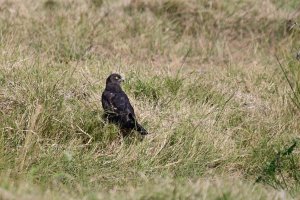
African Marsh Harrier, Dark morph
- volker sthamer
- Media item
- african marsh harrier arusha np circus ranivorus dark morph tanzania
- Comments: 5
- Category: Africa
-
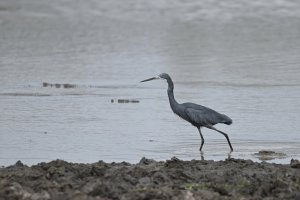
Little Egret, Dark morph
The dark morph of the Little Egret is very similar to the Dimorphic Egret and the Western Reef Egret, those however do not occur in the Julius Nyerere NP ( former Selous Game Reserve). The Little Egret has less white in the face and throat than the Dimorphic E.. The W. Reef Egret has a yellow...- volker sthamer
- Media item
- dark morph egretta garzetta julius nyerere np tanzania
- Comments: 1
- Category: Africa
-
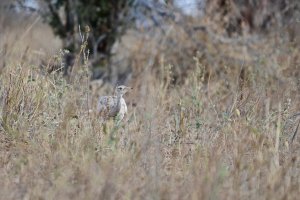
White-bellied Bustard, leucistic
- volker sthamer
- Media item
- leucistic tanzania white-bellied bustard
- Comments: 3
- Category: Africa
-
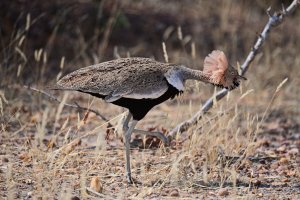
Buff-crested Bustard male
- volker sthamer
- Media item
- buff-crested bustard lophotis gindiana ruaha tanzania
- Comments: 6
- Category: Africa
-
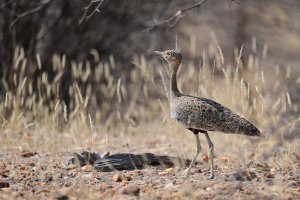
Buff-crested Bustard fem.
- volker sthamer
- Media item
- buff-crested bustard lophotis gindiana ruaha tanzania
- Comments: 1
- Category: Africa
-
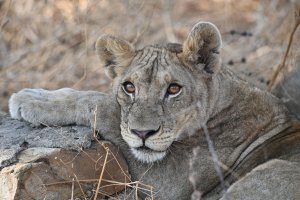
Lion
Good girl....- volker sthamer
- Media item
- 1bb lion panthera leo tanzania
- Comments: 2
- Category: Wild Mammals
-
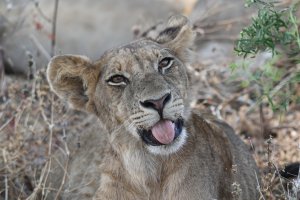
Lion
Naughty boy !- volker sthamer
- Media item
- lion panthera leo tanzania
- Comments: 1
- Category: Wild Mammals
-
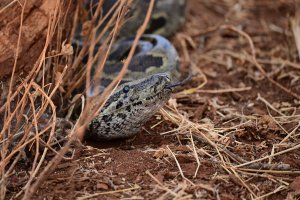
Rock Python
- volker sthamer
- Media item
- manyara python sebae rock python tanzania
- Comments: 2
- Category: Reptiles
-

Advice on tour to Kenya / Tanzania / Ethiopia in Oct-Nov?
Hi, After many independent trips, I am looking for a good company to join an organized bird and mammal tour, suitable for a motivated person who wants to see 110% of what is available and is generally active and enthusiastic. I have 2-3 weeks this autumn, in any of these countries. best,- jurek
- Thread
- bird tours ehiopia kenya tanzania
- Replies: 18
- Forum: Information Wanted
-
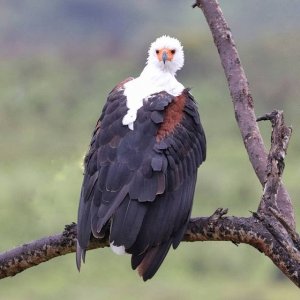
African Fish Eagle
Eye to eye with a true African icon. The African fish eagle! They're one of my favourite raptors! These powerful birds are found all across Africa, wherever there is a water source. And they can prey on anything from fish, waterbirds and even young crocodiles.- the_kenyanbirder
- Media item
- african fish eagle haliaeetus vocifer tanzania
- Comments: 17
- Category: Africa
-

Tacazze Sunbird
This exquisite nectar feeder is only found in the Montane highlands of Eastern Africa.- the_kenyanbirder
- Media item
- nectarinia tacazze tacazze sunbird tanzania
- Comments: 6
- Category: Africa
-
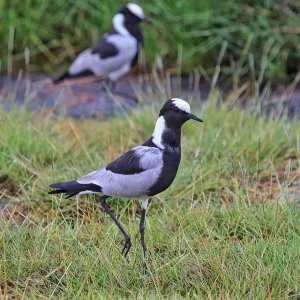
Blacksmith Lapwing
These guys get their name from the metallic 'tink' sound they make, which resembles a blacksmith hitting a piece of metal- the_kenyanbirder
- Media item
- blacksmith lapwing tanzania vanellus armatus
- Comments: 4
- Category: Africa



